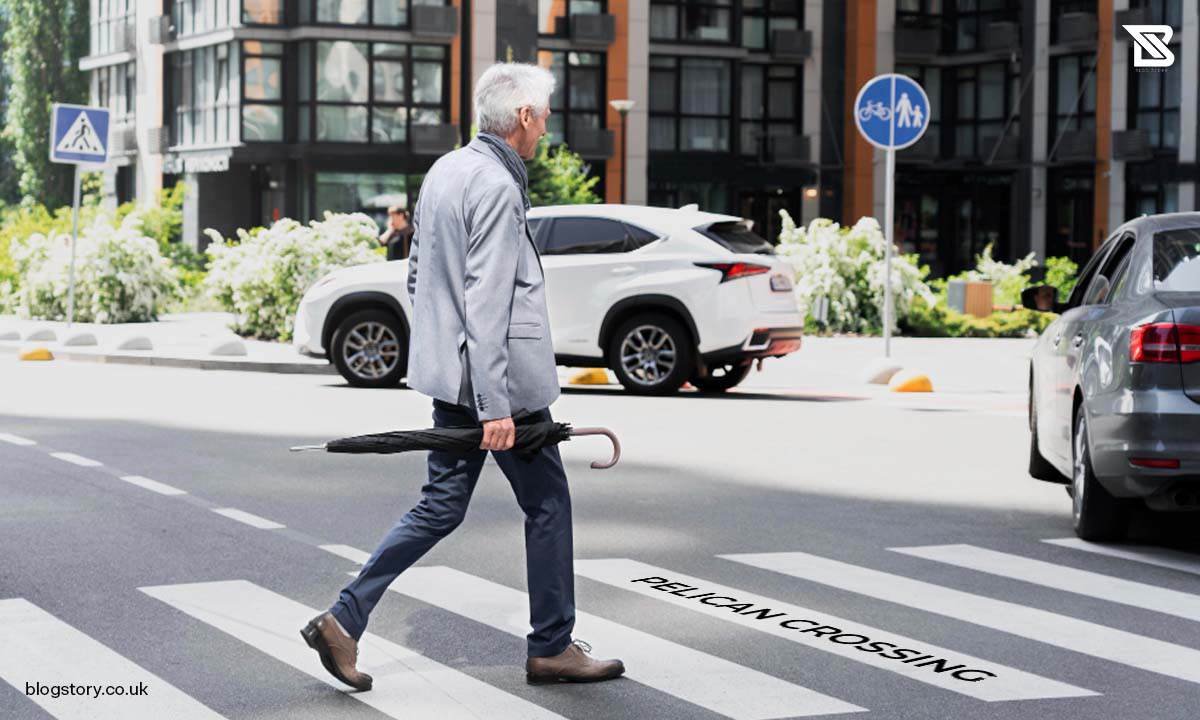
What Is A Pelican Crossing UK: Lights, Types, And Regulations Explained
Unbeknownst to you, Pelican Crossing was not always known by that name.
Did you know that non-visual indicators are installed at every crossing for pedestrians who are blind or visually impaired?
What about the fact that the pedestrian is flashed with both the green person and the amber light?
Crossings for pedestrians are commonplace.
Your commute to work, your trip to the store, and your beach outing.
Although they seem straightforward in theory to both drivers and pedestrians, many people disregard the fundamental guidelines.
They operate similarly to a standard traffic light system for drivers, but in order to drive safely, you must be aware of your surroundings and any potential hazards.
You can drive anywhere in the UK with confidence if you can handle this common crossing.
It is imperative that drivers remain alert when approaching one of these crossings.
What Is A Pelican Crossing?
A pelican crossing is a pedestrian crossing equipped with call button-activated traffic signals for both pedestrians and cars.
They are found in the Isle of Man, the Channel Islands, Ireland, Indonesia, and Australia; they originated in the UK and Ireland.
In Great Britain, pedestrian signals above the call button took the place of puffin crossings when the crossings were phased out in 2016.
In the US, a similar system known as the HAWK beacon is in use.
The initial letters of the phrase “PEdestrian LIght CONtrolled” are the source of the term “pelican crossing.”
The description “PEdestrian LIght CONtrolled” provides information on how the crossings operate.
They are operated by pedestrians who press a button to start a lighting pattern that makes it safe for people to cross the street.
Then, “pelican” has been added to the abbreviation PELICON.
This is so because pelicans are a well-known species of bird that lives in Ireland and the UK.
The idea behind the introduction of these crossings was that people would easily recall the name.
More recently, toucan and puffin crossings have been added to the list of bird crossings for which the names of birds are used.
It is now clear what are pelican crossings and the idea behind them.
How Do Pelican Crossings Work?
Pedestrians can activate pelican crossings by pressing a button on the crossing.
This action triggers a reaction in the crossing’s illuminated beacon, which serves as a signal to stop traffic and permit a pedestrian to cross the street safely.
The general safety of pedestrians and other road users is clearly impacted by the way you approach pelican crossings. It is essential for drivers to know how to cross a pelican crossing safely.
Although they were initially installed in the UK in 1969, pelican crossings are no longer being installed.
Approaching A Pelican Crossing UK
Approaching pelican crossings from behind the wheel requires extreme caution because traffic lights can suddenly change in color and direction.
You can respond to possible changes by keeping your speed and stepping off the accelerator.
You will first notice amber lights flashing while you wait for the green light. If there is no obstruction at the crossing, proceed cautiously.
When navigating a pedestrian crossing, pay attention to oncoming traffic as well as possible pedestrians who may be waiting to cross.
Continue if it’s safer to do so than to stop because traffic lights might arrive too late. If you are unable to stop in time, reduce your speed and wait for the green light rather than running the risk of getting into an accident.
It is worth more to wait for the green light for a few seconds than it is to risk an accident.
Pelican Crossing Lights: Possible Instructions For Vehicles
When it comes to passing a driving theory test, this is the most crucial aspect of using pelican crossings.
Regarding pelican crossings, there are four possible light instructions for cars:
- Stop and wait at the static red light.
- Flashing amber: If there are no people crossing the street, you can drive.
- Green: Proceed.
- Amber: The lights are going to turn red when they are solid amber in color. One needs to reduce speed and get ready to stop.
Additionally, some pelican crossings are equipped with cameras that can recognize when a vehicle stops in the crossing zone.
If you pull over in this zone, you risk failing your driving test, receiving a fine, and/or receiving points on your license.
Pelican Crossing Lights For Pedestrians Vs Motorists
The following pattern of lights, connected to the lights for drivers, is observed by pedestrians:
- A pedestrian is able to cross when the green person is lit. (The driver is going to notice a red light.)
- When the pedestrian notices a flashing green light, they should proceed with crossing the street, but they shouldn’t start yet. (The driver will notice amber lights flashing.)
- The pedestrian shouldn’t cross if the red person is illuminated. (The driver will notice a static amber light or a green light.)
Final Thoughts
Comprehending the meaning of a Pelican Crossing in the United Kingdom is crucial for both drivers and pedestrians. It’s critical to navigate these crossings safely due to their unique lights, variations, and strict regulations.
With the information supplied, drivers can follow the rules and pedestrians can use these crossings with confidence, resulting in improved safety and more efficient traffic flow for all users of the road.
It is important to understand the features and functions of pelicans, whether they are the classic species or the more recent variations like Puffin and Toucan crossings.
Reap the benefits of Pelican Crossings safety and convenience throughout the UK by being informed and cautious.
You May Like Also:












